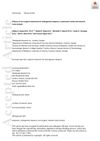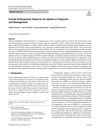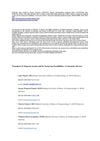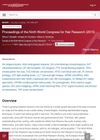LLLT vs Minoxidil for Hair Loss Treatment: Which Works Better? Research/Science 5/16/2025
Minoxidil and LLLT are compared for treating hair loss, with LLLT showing higher regrowth rates and fewer side effects. LLLT is less time-consuming and more suitable for those with health issues, while Minoxidil requires daily application.
View this post in the Community →
Similar Community Posts Join
5 / 1000+ resultscommunity 1.5 years finasterite. 1 tablet daily. Don't see any improvement.
The user has been taking finasteride for 1.5 years without seeing improvement in hair regrowth. Suggestions include adding minoxidil or switching to dutasteride, with concerns about side effects.
community 38M, Topical Min 5% + Infrared Therapy (4 Months In)
A 38-year-old man reports positive results using topical Minoxidil 5% and infrared therapy for hair regrowth over four months, along with Saw Palmetto and Pumpkin Seed Oil supplements. Others suggest adding Finasteride for better maintenance and discuss the role of DHT blockers.
community Hair loss treatment tier list by Dr Oscar Muñoz
Dr. Oscar Muñoz's hair loss treatment tier list suggests oral minoxidil and finasteride are highly effective, while topical treatments like RU58841 and microneedling are less effective. Users discuss the effectiveness of various treatments, with some favoring oral options for their practicality and higher response rates.
community John Cena Says Hair Transplant 'Changed The Course Of My Life' and maintains with daily routine that includes "red-light therapy, minoxidil, vitamins, shampoo"
John Cena attributes his improved life and career to a hair transplant and maintenance routine with red-light therapy, minoxidil, vitamins, and shampoo. Users discuss the effectiveness and side effects of finasteride, with mixed opinions on its necessity.
community Kintor’s KX-826 Pyrilutamide!!
KX-826 hair loss treatment completed trials with mild side effects. GT20029 may be ultimate cure, destroying androgen receptors causing baldness.
Related Research
6 / 1000+ results
research Efficacy of Non-Surgical Treatments for Androgenetic Alopecia: A Systematic Review and Network Meta-Analysis
Low level laser therapy works best for hair loss, followed by PRP, finasteride, and minoxidil.

research Female Androgenetic Alopecia: An Update on Diagnosis and Management
FAGA diagnosis uses blood tests and trichoscopy, with treatments like topical minoxidil, oral anti-androgens, and hormone-modulating drugs.
research Female Pattern Hair Loss: An Update
Female pattern hair loss has multiple causes and treatments, with new therapies showing promise.

research Treatment of Alopecia Areata and Its Numerous Possibilities: A Literature Review
Alopecia areata treatment should be personalized, using topical or systemic therapies based on severity, with promising options like JAK inhibitors needing more research.

research Androgenetic Alopecia: A Review and Emerging Treatments
Hair loss, known as Androgenetic Alopecia, is often caused by hormones and can be diagnosed using noninvasive techniques. Treatments include topical minoxidil and oral finasteride, with new treatments being explored. There may also be a link between this type of hair loss and heart disease risk.

research Proceedings of the Ninth World Congress for Hair Research 2015
The 2015 Hair Research Congress concluded that stem cells, maraviroc, and simvastatin could potentially treat Alopecia Areata, topical minoxidil, finasteride, and steroids could treat Frontal Fibrosing Alopecia, and PTGDR2 antagonists could also treat alopecia. They also found that low-level light therapy could help with hair loss, a robotic device could assist in hair extraction, and nutrition could aid hair growth. They suggested that Alopecia Areata is an inflammatory disorder, not a single disease, indicating a need for personalized treatments.